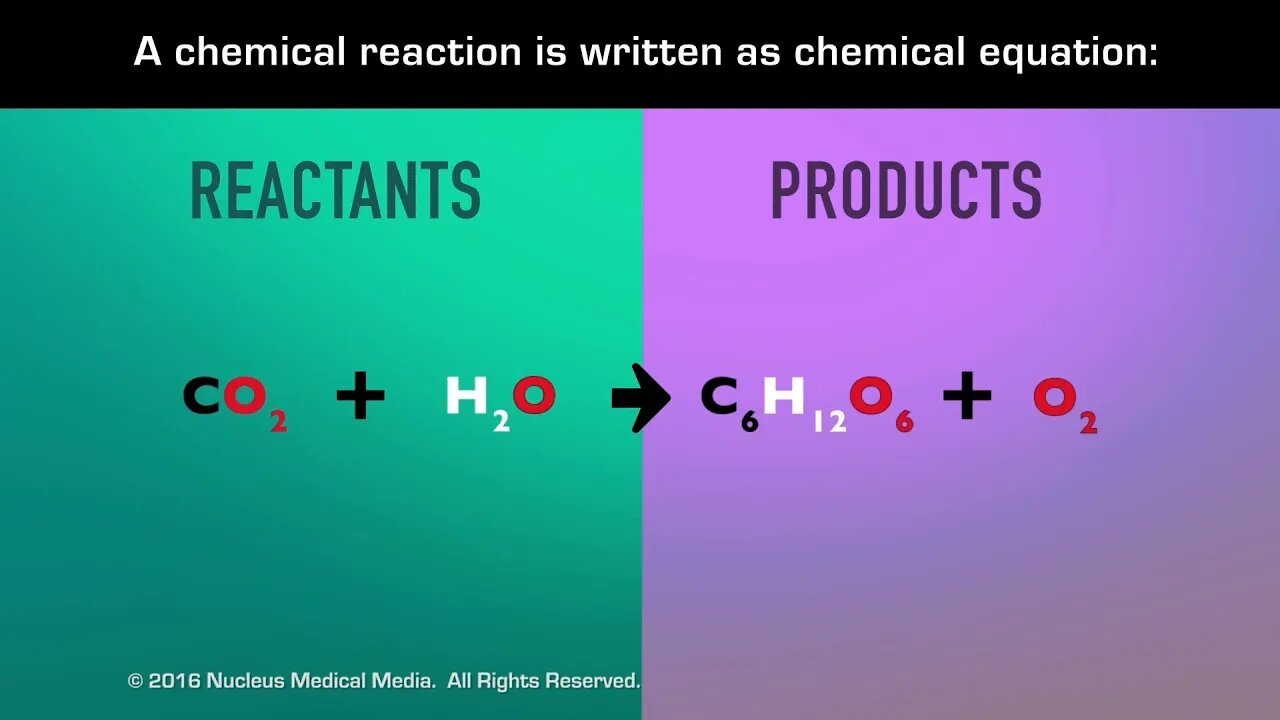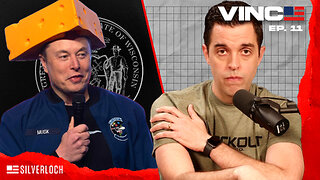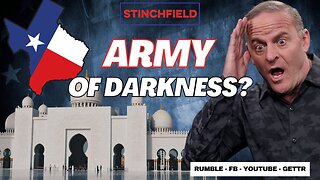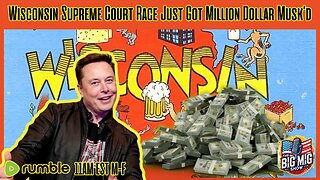Premium Only Content

Chemical Reactions
For Employees of hospitals, schools, universities and libraries: download up to 8 FREE medical animations from Nucleus by signing up for a free trial at: http://nmal.nucleusmedicalmedia.com/biology_youtube
#ChemicalReactions #ChemicalBonds #ChemicalEquation
SCIENCE ANIMATION TRANSCRIPT: What are chemical reactions? A chemical reaction is a process in which substances interact to form different substances by breaking, forming, or rearranging their chemical bonds. Substances that take part in a chemical reaction may be ionic or covalent compounds, as well as the atoms, ions, or molecules of some elements. Let's look at an example of a chemical reaction. Photosynthesis is a chemical reaction in which plants make food by using the sun's energy to combine carbon dioxide from the air and water from the soil into a sugar called glucose and oxygen. In this reaction, carbon dioxide and water are called reactants, because they're the substances changing by combining or reacting together. Glucose and oxygen are called products because they're the new substances produced by the reaction. Scientists write a chemical reaction in the form of a chemical equation. A chemical equation includes the reactants' chemical formulas on the left and the products' chemical formulas on the right. Notice that the reactants and the products are built from the same elements, carbon, oxygen, and hydrogen. Products must contain the same amount and type of elements that were in the reactants, and products never contain different elements than the reactants. In this reaction, the chemical formulas for the reactants are CO2 for carbon dioxide, and H2O for water. The chemical formulas for the products are C6H12O6 for glucose, and O2 for oxygen. We are not done yet because the equation is not balanced. This is necessary due to the law of conservation of matter, it states that matter can't be created or destroyed, but can only change forms. So to balance the equation, we have to make sure that the number of atoms of each element in the reactants is equal to those in the products, this is because a chemical reaction must abide by the law of conservation of matter, no atoms are created or destroyed. Here's the balanced version of this equation. It shows six molecules of carbon dioxide reacting with six molecules of water to produce one molecule of glucose and six molecules of oxygen. The numbers in front of the formulas are called coefficients. They indicate the number of molecules of each reactant and product. If there's no coefficient, it's understood to mean one molecule of that substance. To review, in a chemical reaction chemical bonds in reacting substances are broken then reformed to make different substances. The reacting substances are called reactants. The substances produced are called products. A chemical equation is a written expression of a chemical reaction, it includes the chemical formulas of both the reactants and the products. In a balanced chemical equation, the number of atoms of each element in the reactants equals those in the products. [music]
NSV16026
-
 1:01:04
1:01:04
VINCE
3 hours agoWisconsin Decides The Future Of The World | Episode 11 - 03/31/25
188K153 -
 LIVE
LIVE
Grant Stinchfield
43 minutes agoTexas AG To Investigate Muslim Centric Communities and The Quest to Take Over America
156 watching -
 33:56
33:56
Rethinking the Dollar
1 hour agoThe Bigger Issue Is War, Not A Silver Squeeze | Morning Check-In
2.69K5 -
 LIVE
LIVE
Flyover Conservatives
11 hours agoNathan French Drops Prophetic Bombs About Trump, Revival & America’s Future | FOC Show
352 watching -
 LIVE
LIVE
The Shannon Joy Show
1 hour ago🔥🔥Nothing Is Changing - In Fact It’s Getting Worse. But This Weekend’s #SummitForTruth In New York Gave Us Reason For HOPE And A Path To Liberty & Normalcy.🔥🔥
230 watching -
 LIVE
LIVE
LFA TV
15 hours agoLFA ALL DAY LIVE STEAM! 3/31/25
2,661 watching -
 59:21
59:21
BonginoReport
5 hours agoKansas Capitol: Satanists Violently Attack Christians - Early Edition w/Evita (Ep.171) - 03/31/2025
147K178 -
 2:18:03
2:18:03
Matt Kohrs
14 hours agoStocks Crash, Breaking Tariff News & Trading $1M || The MK Show
63K2 -
 1:12:49
1:12:49
The Big Mig™
14 hours ago"Wisconsin Supreme Court Race Just Got Million Dollar Musk’d”
7.64K3 -
 LIVE
LIVE
Caleb Hammer
1 hour agoTrans Socialists Hate America | Financial Audit
169 watching